Install Docker Desktop on macOS
This article is for those looking for a detailed and straightforward guide on installing Desktop Compose on macOS.
Docker Desktop is an application for building and sharing containerized applications and microservices.
Follow the link and click on the “Download for Mac” button.
This tutorial walks you through installing the Stable version of Docker Desktop. If you want to install the experimental (Edge) version of Docker Desktop, then you need to select “Edge” from the drop-down list.
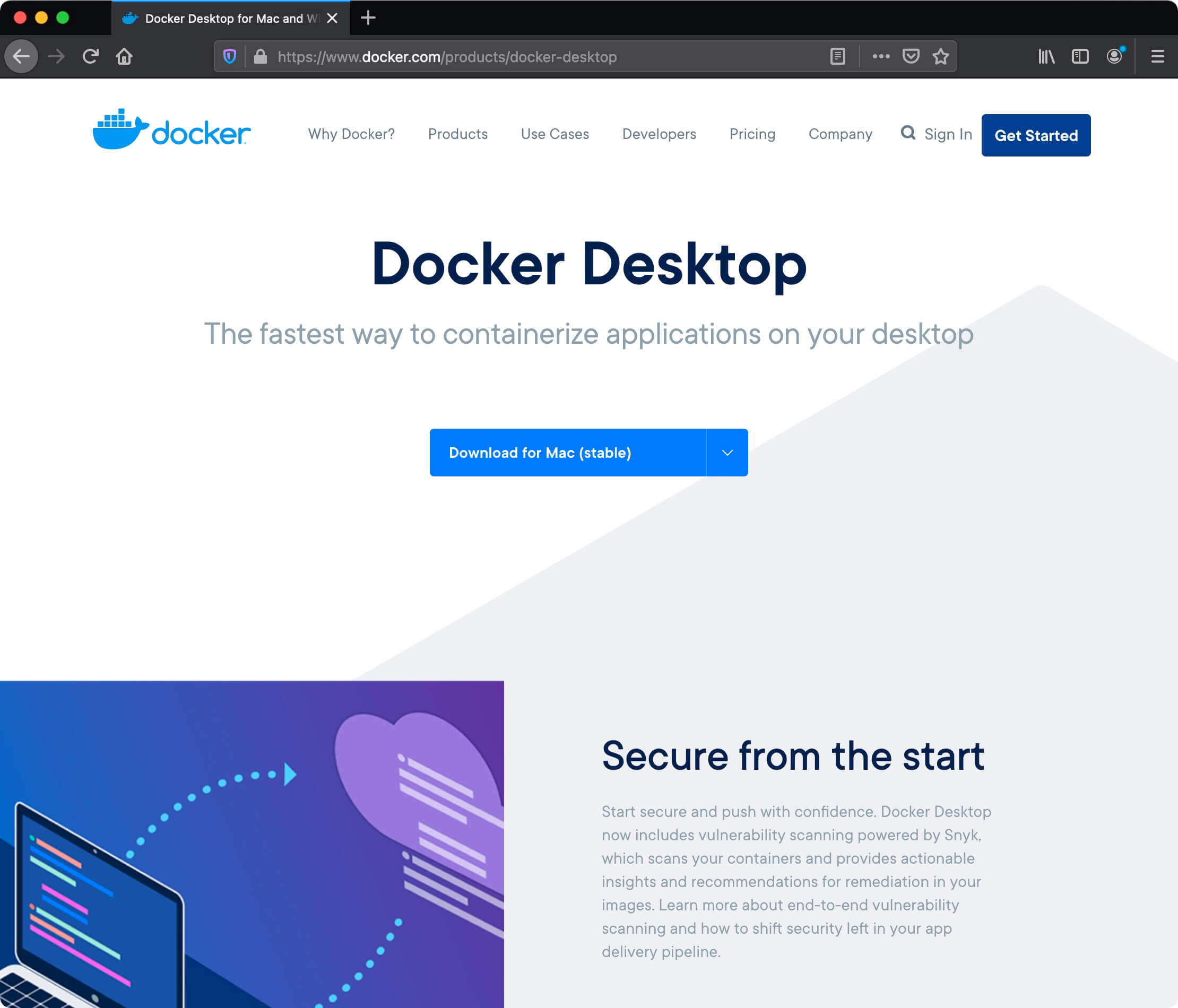
Go to the Downloads folder and double-click on the Docker.dmg file with the left mouse button.
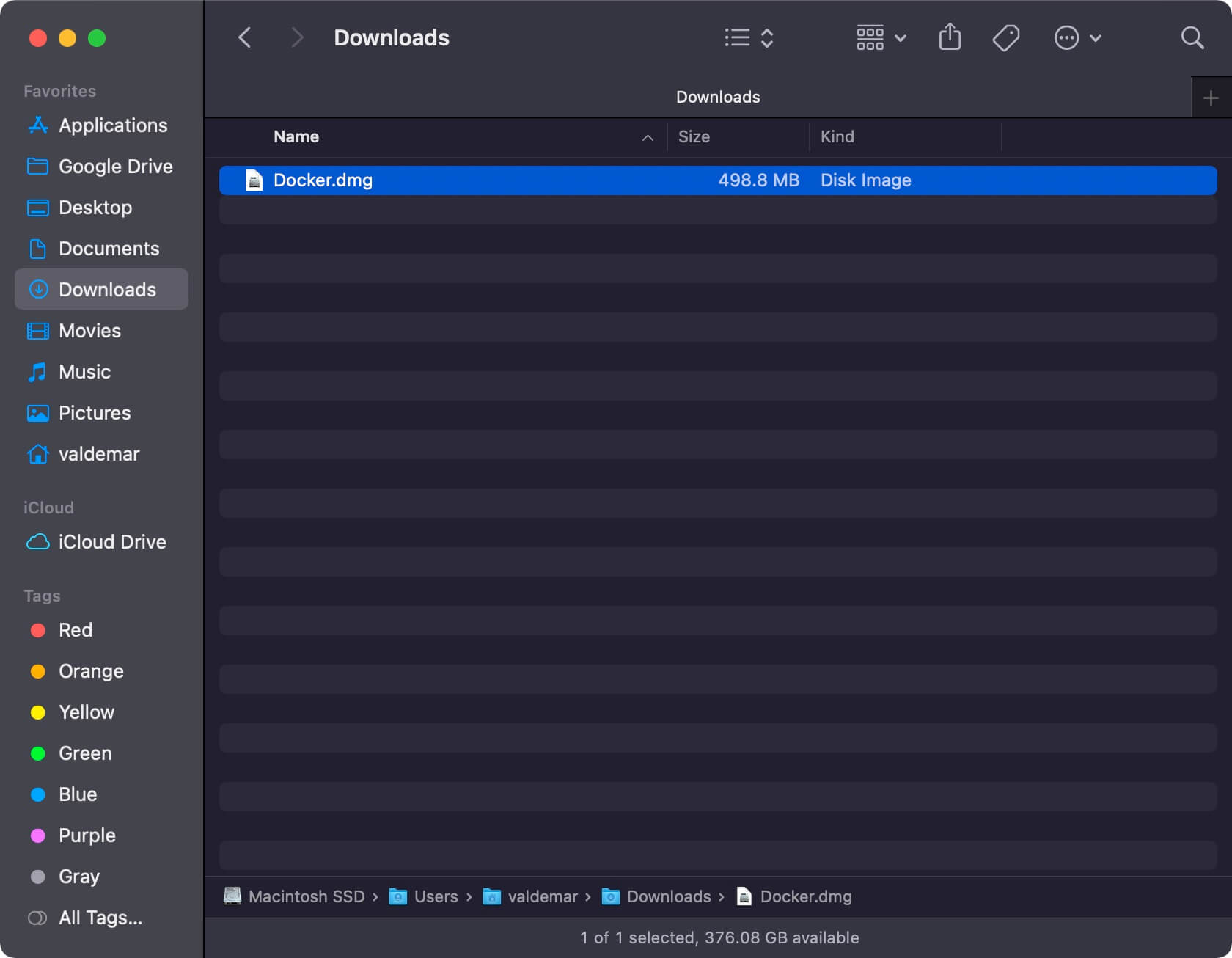
Now you need to move the Docker application to the Applications folder.
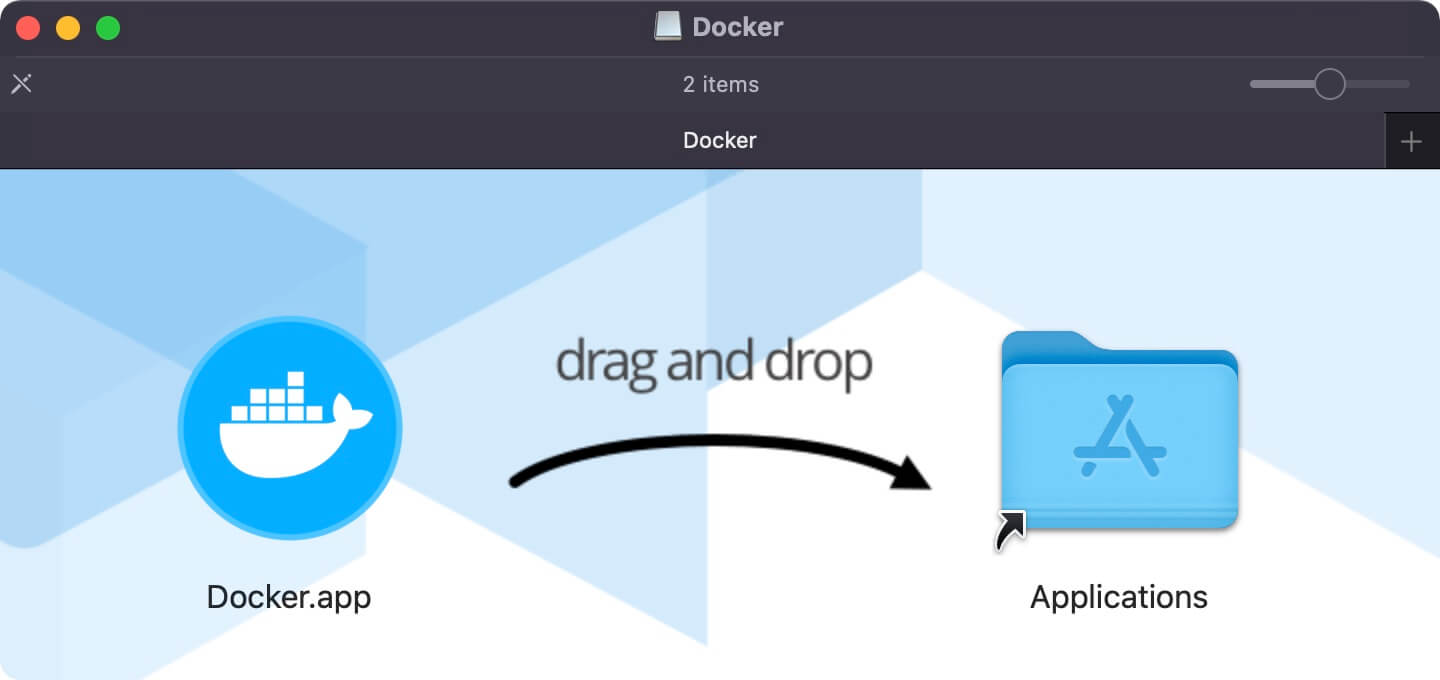
Go to “Applications” and double-click on the Docker.app file with the left mouse button.
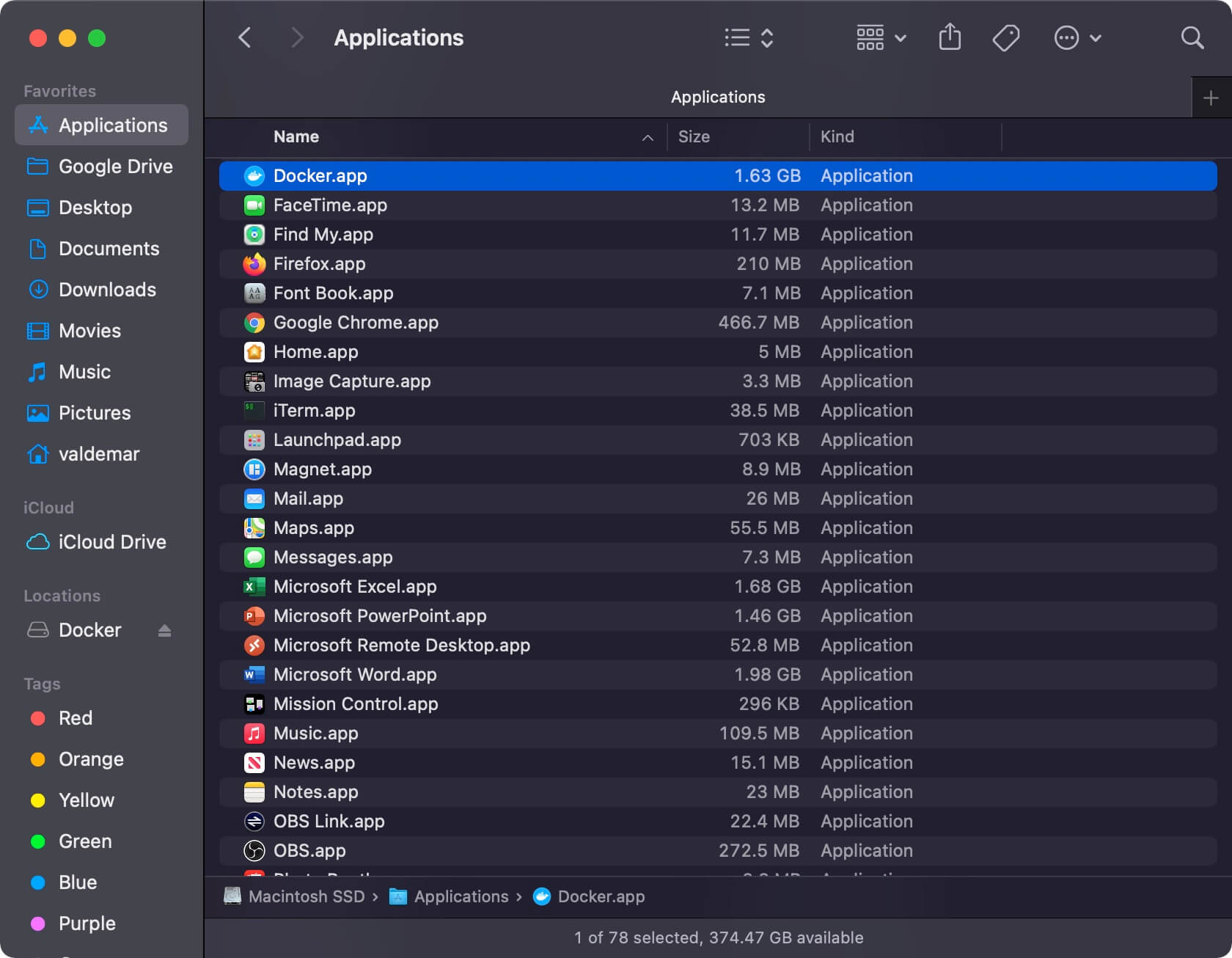
Next, you need to confirm that you trust the Docker application that was downloaded from the Internet.
Click on the “Open” button.
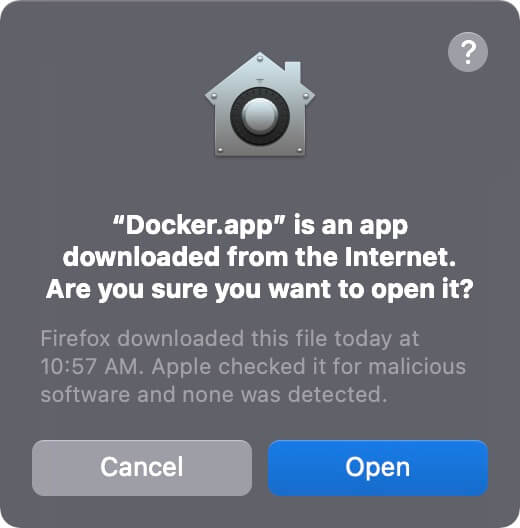
In the next step, you will see a warning that Docker Desktop needs additional rights to install prerequisites.
Click on the “OK” button.

Next, you need to specify the username and password of an account with administrator rights on your computer and click on the “Install Helper” button.
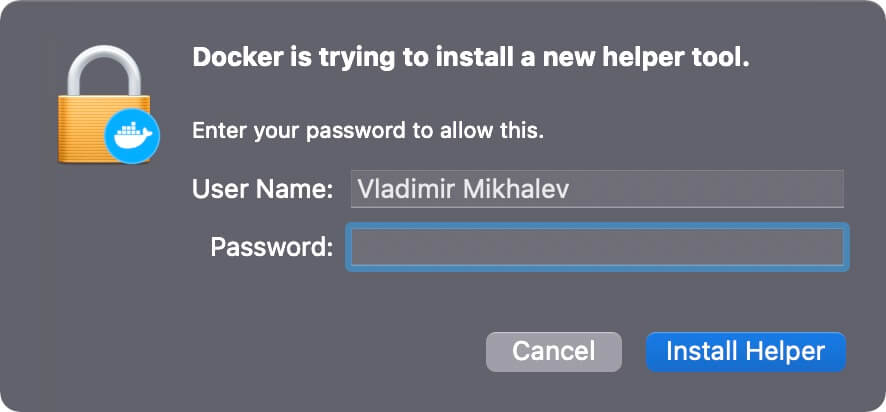
Docker Desktop installation completed successfully.
Click on the “Skip tutorial” button.
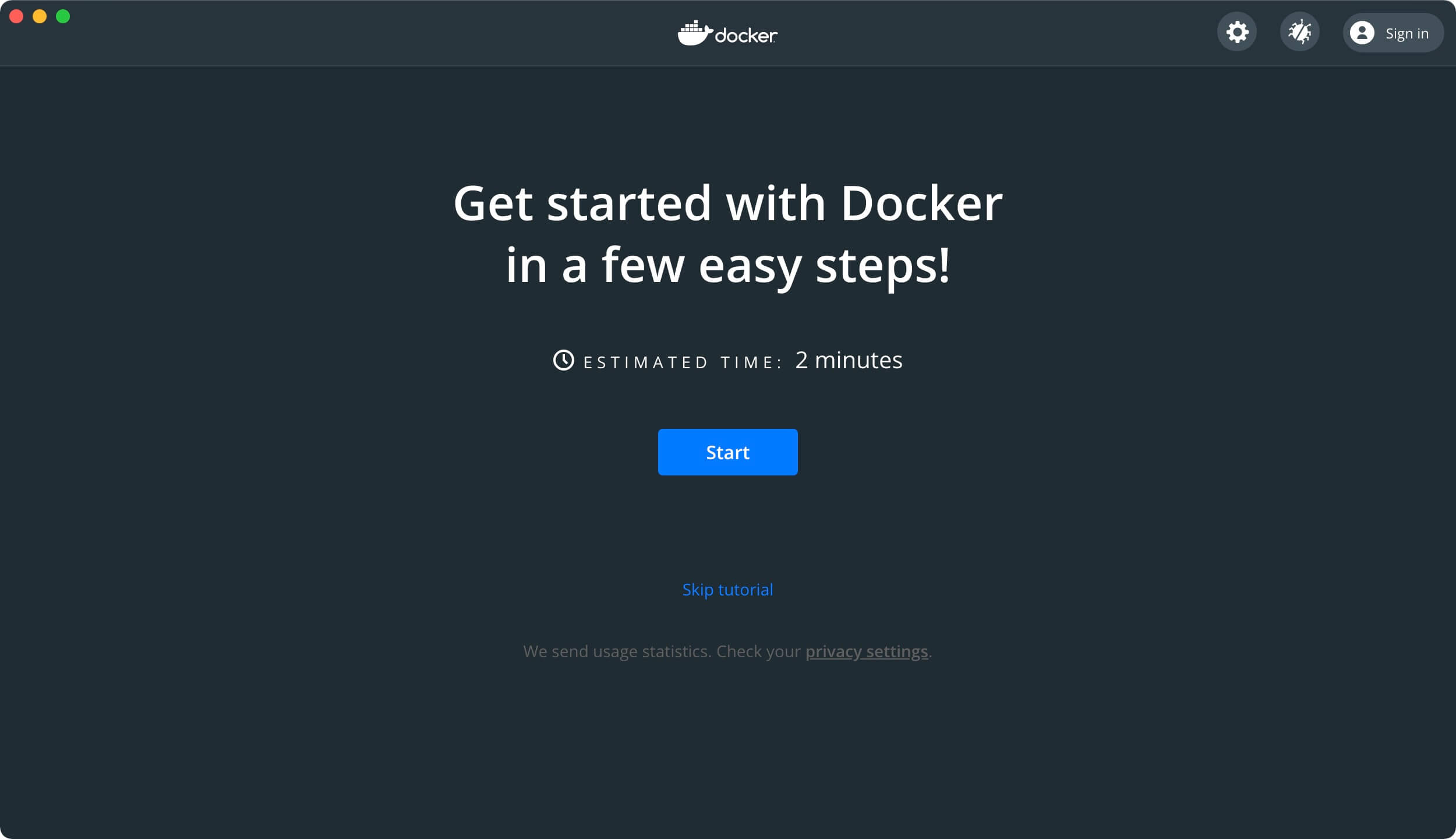
Now you can start the first container.
We save the received command.
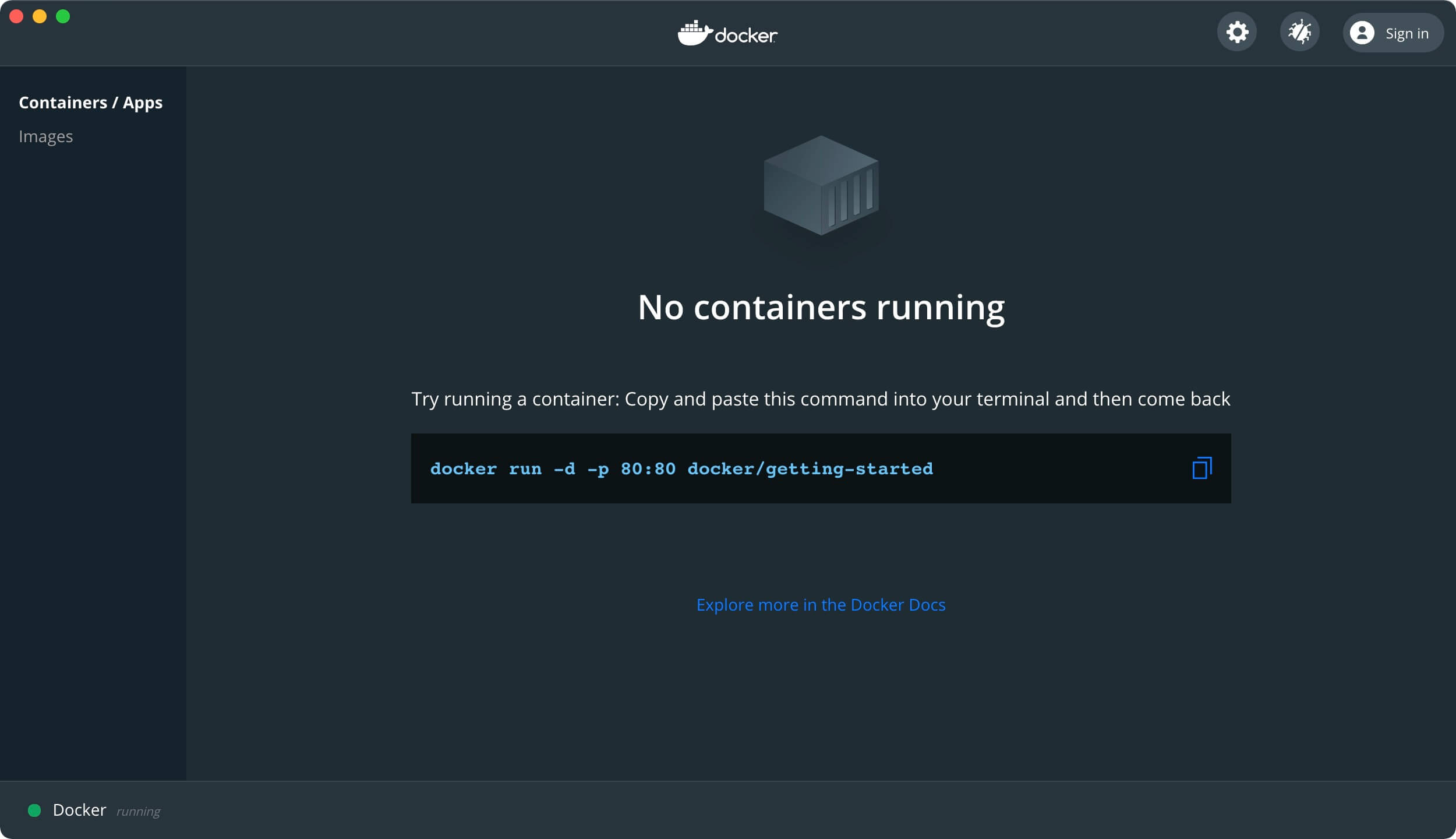
Go to “Applications”, then open the “Utilities” folder and double-click on Terminal.app with the left mouse button.
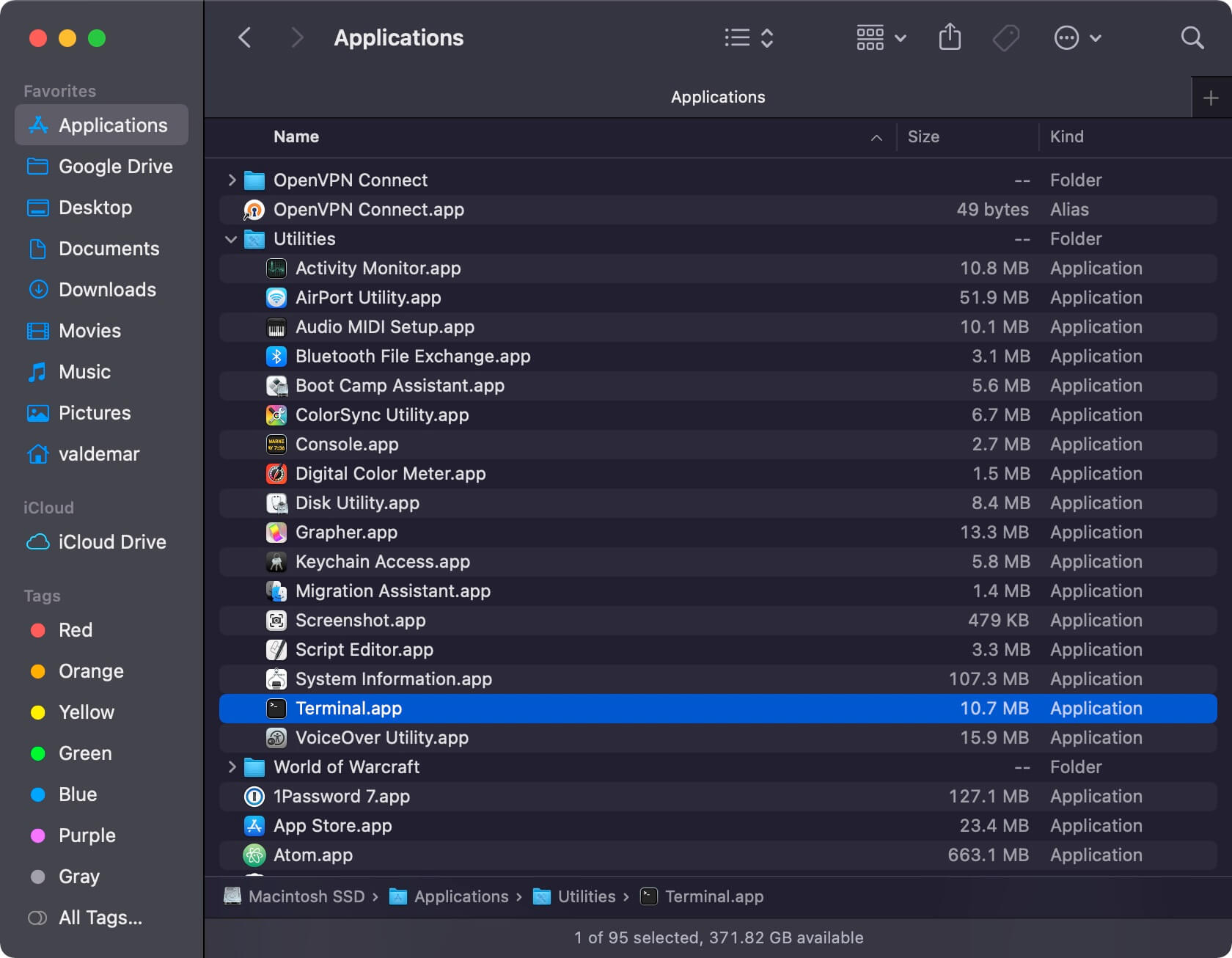
We execute the previously received command:
docker run -d -p 80:80 docker/getting-started 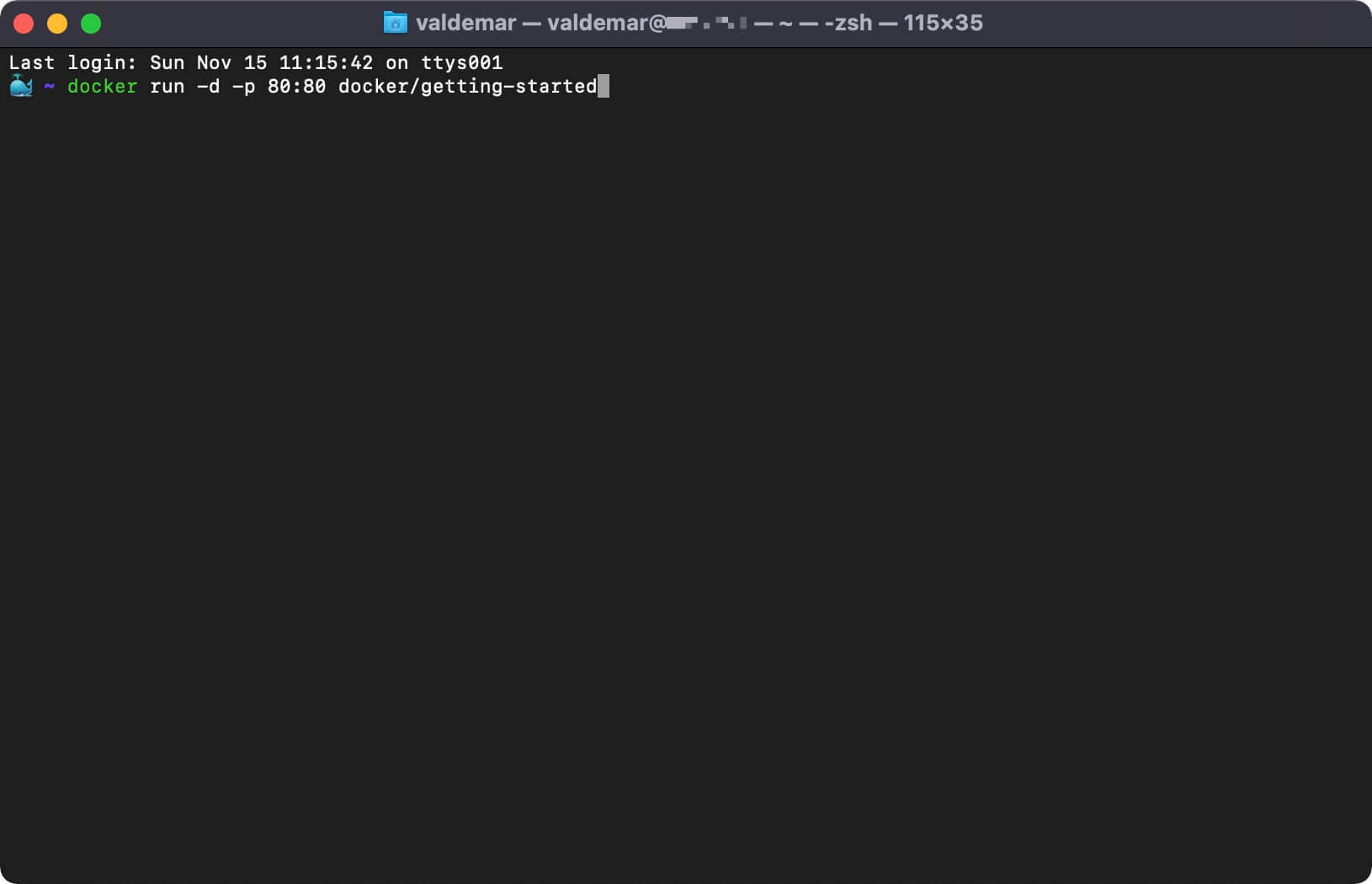
We return to the Docker Desktop application.
The container has started successfully and is displayed in the Docker Desktop app.
Now click on the “Open in Browser” button, which is to the right of the running container.
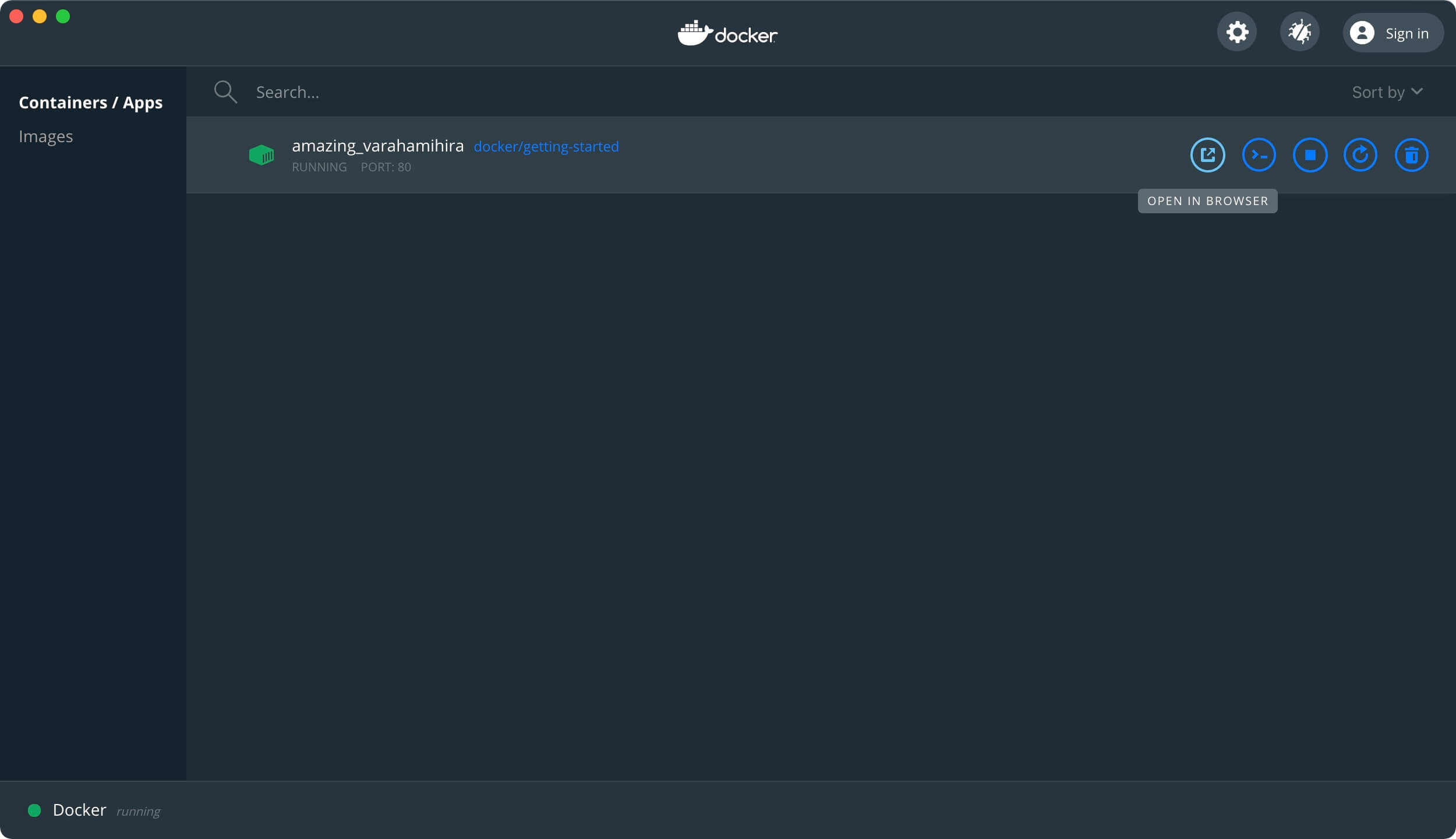
The browser window will display information about the previously run command that launched your first container.
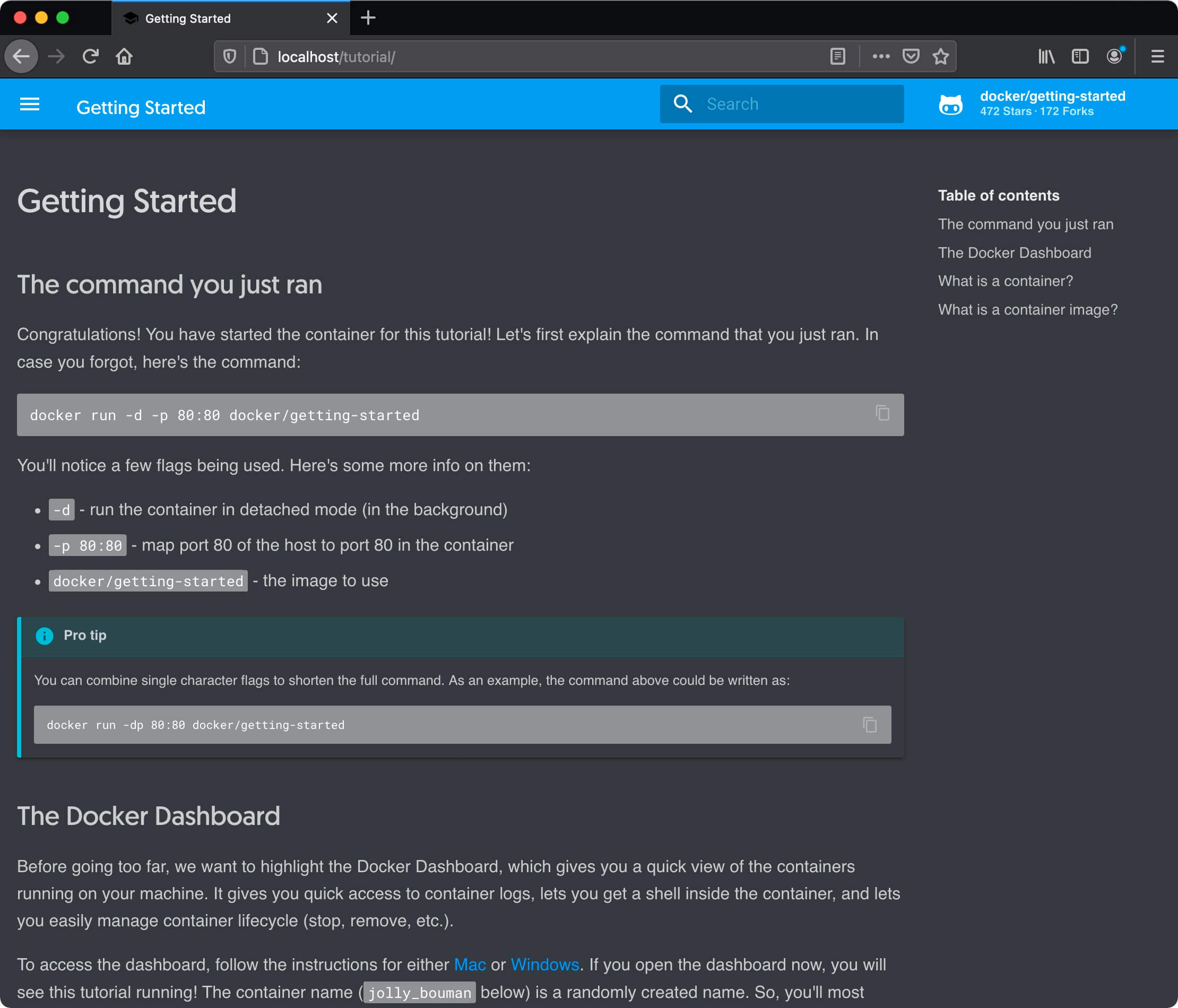
Now you need to log in with your Docker Hub account.
If you don’t already have an account on the website, then register for more options.
If you already have an account on the website, go back to the Docker Desktop application and click on the “Sign in” button located in the upper right corner.
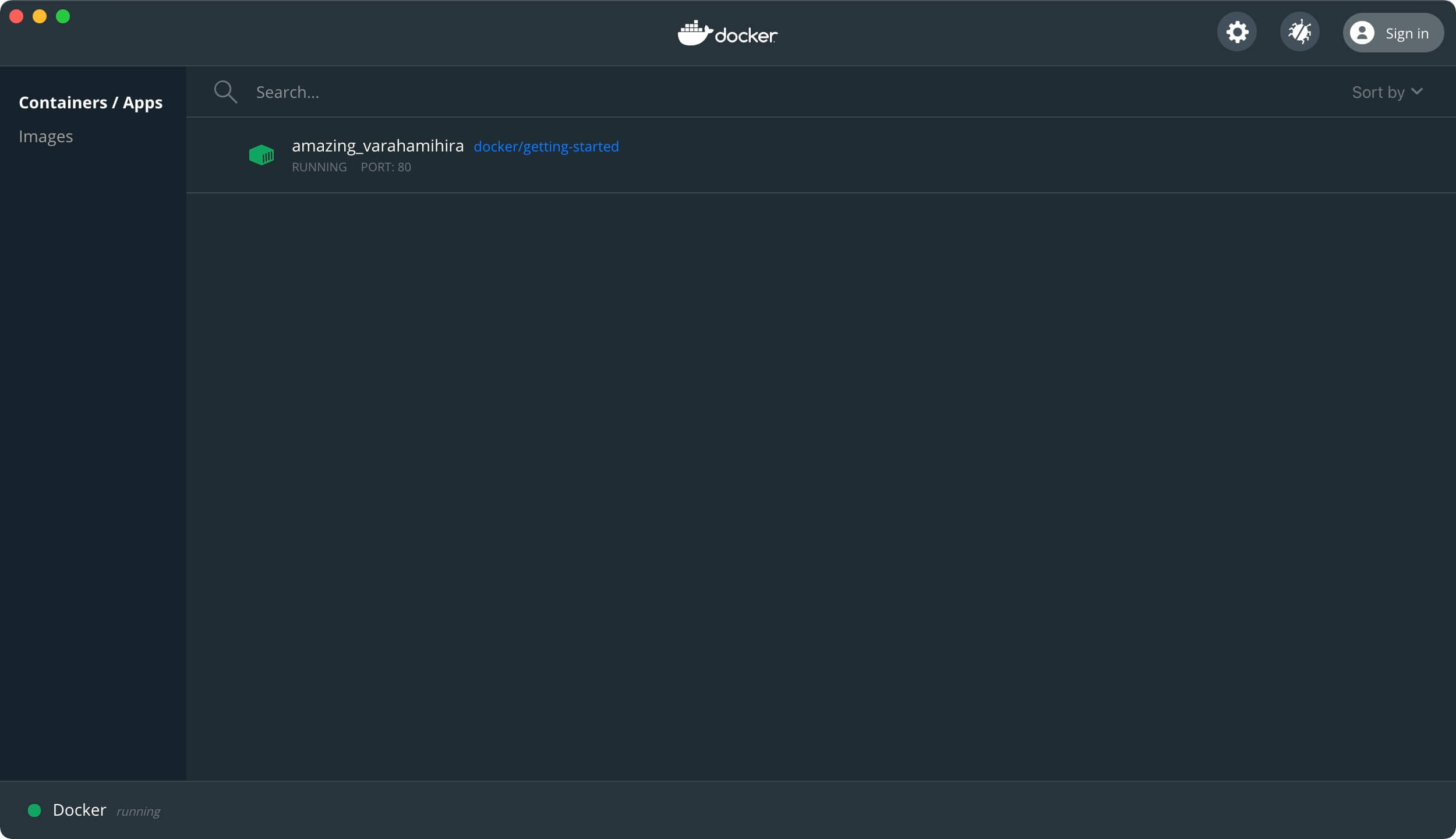
Then we specify the login and password for the Docker Hub account and click on the “Sign in” button.
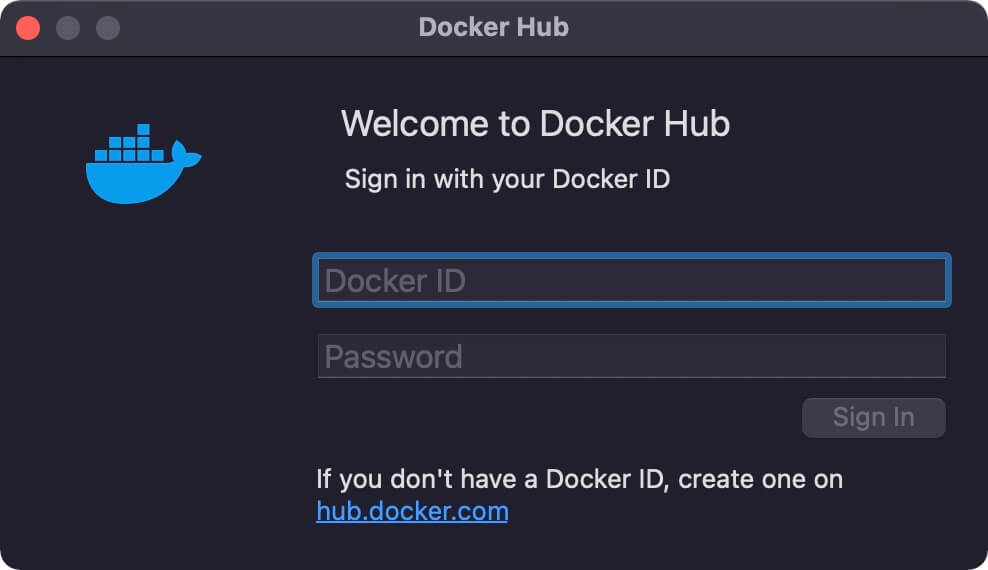
Follow Me
🎬 YouTube
🐦 X / Twitter
🎨 Instagram
🐘 Mastodon
🧵 Threads
🎸 Facebook
🧊 Bluesky
🎥 TikTok
💻 LinkedIn
📣 daily.dev Squad
🧩 LeetCode
🐈 GitHub
Community of IT Experts
👾 Discord
Is this content AI-generated?
Nope! Each article is crafted by me, fueled by a deep passion for Docker and decades of IT expertise. While I employ AI to refine the grammar—ensuring the technical details are conveyed clearly—the insights, strategies, and guidance are purely my own. This approach may occasionally activate AI detectors, but you can be certain that the underlying knowledge and experiences are authentically mine.
